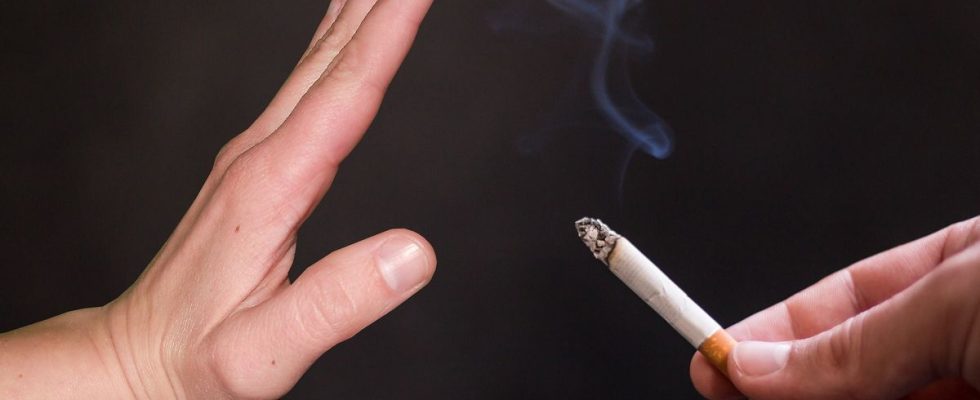You should have seen them Didier and Bernard, fighting against their cravings for cigarettes by repeating the famous sentence: “Tobacco is taboo, we will all overcome it. A quarter of a century after the famous slogan of the Unknowns, taken from the film The betPublic Health France publishes this Wednesday a study on smoking in France on the occasion of World No Tobacco Day.
France has “12 million daily smokers” in 2022, a stable but high figure. With 75,000 deaths attributable to it in 2015, tobacco is the leading cause of preventable death. Above all, as in recent years, the organization has noted an inequality: the most socially disadvantaged smokers are more numerous. In this context, what levers should be activated during prevention campaigns to dissuade and support smokers?
Listen rather than stigmatize
“The more smoking recedes, the more it concentrates on the populations who present the most psychological and social vulnerabilities: young people who have dropped out of school, out of work, people in precarious situations”, comments Jean-Michel Delilepresident of Fédération Addiction, which advocates targeted campaigns aimed at this type of audience.
In Quebec, one of the most restrictive regions with regard to smokers, the authorities have relied on two options. “Denormalization, that is, changing social norms around smoking. Smoking should no longer be seen as desirable but repulsive, explains Josée Lapalme, postdoctoral researcher in public health and social inequalities at the University of Montreal. The other axis is to go through the laws. »
In the Belle Province, since 2015, it is forbidden to smoke on the terrace, in children’s play areas, inside a car in the presence of a child under 16… Result: consumption has dropped , of course, but social inequalities in terms of smoking have widened.
Multidisciplinary support
Hence the importance of demonstrating relevance during prevention campaigns. “When you want to change the norms, you can quickly slide into morality. We start by saying that the cigarette is disgusting. Then there is a perverse effect. We realize that it is ultimately the populations of precarious smokers who will be stigmatized. Anti-tobacco strategies can increase inequalities, or at least not change them”, continues Josée Lapalme.
Faced with smokers who combine social difficulties and are less accessible to prevention messages, the approach must be personalized. “It requires that the care centers, which were more focused on the monitoring of drugs and alcohol, open up to the problems related to smoking, because they have multidisciplinary teams which would make it possible to support these vulnerabilities, specifies Jean-Michel Delile. It requires strengthening the care support with something that would no longer limit the prescription of patches but that allows to take these psychological and social vulnerabilities. »
For greater efficiency, Josée Lapalme believes that the problem should not be isolated. “Among disadvantaged people, you have to talk to smokers, realize that it’s a subject related to other problems [pauvreté, racisme, inégalités]and be able to provide broad access to smoking cessation resources [médicaments, etc.]. »
An entire generation of young non-smokers by 2032 is the government’s roadmap. An achievable objective according to Jean-Michel Delile, provided “to maintain the effort and update the prevention messages”.

